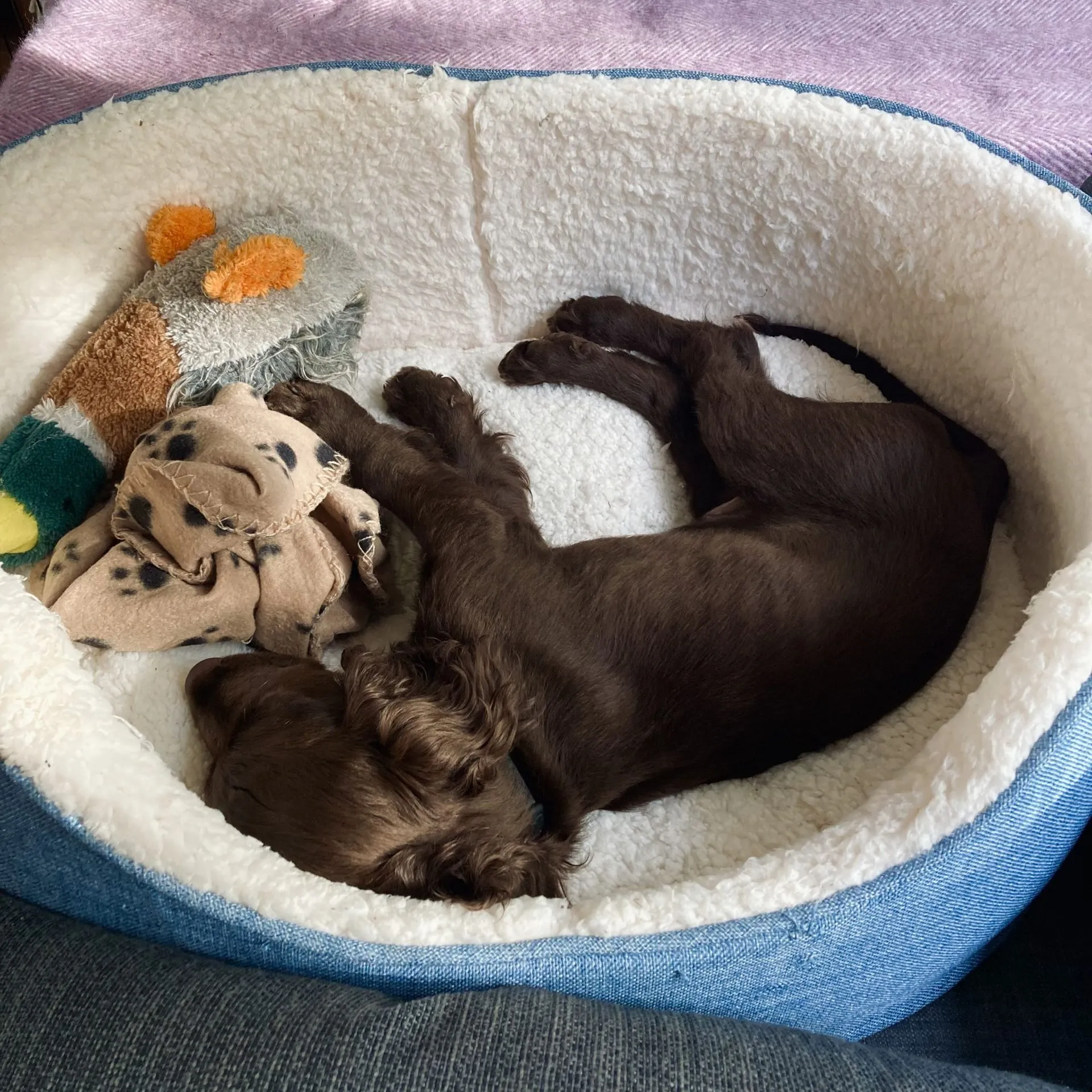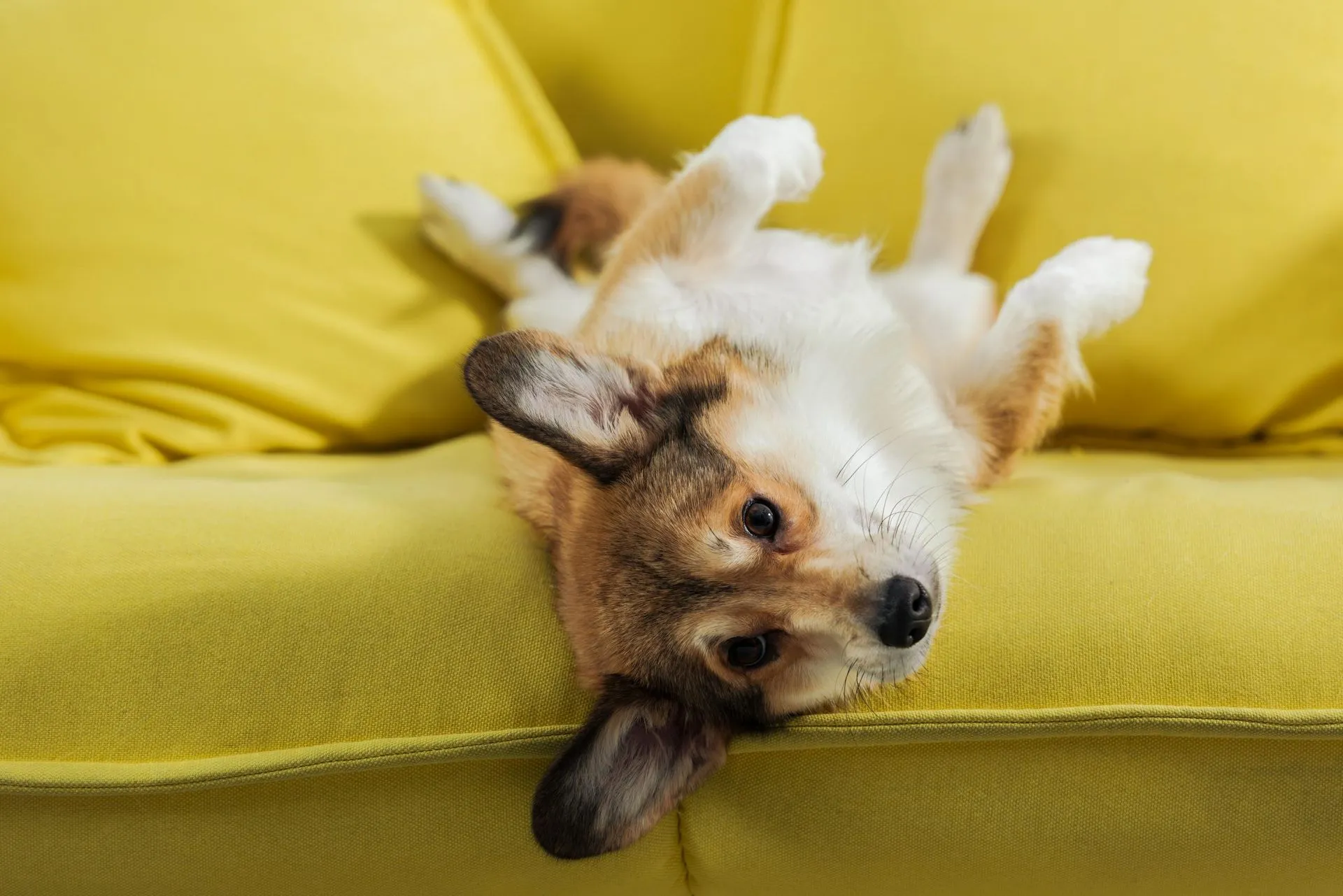It’s a common scenario for many dog owners: the desire for closeness with their furry companions often leads to allowing them on the sofa. While this can be a cherished bonding experience, especially on a chilly evening, it can quickly become an issue when your dog is muddy, or you have guests who prefer a dog-free lap. This challenge is particularly pertinent for puppy owners, who want to establish good habits from the start. Training your puppy to respect boundaries, like staying off the furniture, is essential for a harmonious household. While it might seem like a subtle behavior to address, expert dog trainer Ben Randall’s Beggarbush training methods offer effective solutions. Randall, with two decades of experience, has successfully tackled various canine behaviors, from teach dog not to jump on guests to more complex obedience issues. This guide, drawing from his proven techniques, will provide five clear steps to help you train your puppy or dog to stay off the sofa and happily settle in their own bed instead.
1. Establish a Designated Bed for Your Dog
The first and most crucial step in teaching your puppy or dog to stay off the sofa is to provide them with their own comfortable and inviting bed. For indoor dogs, it’s beneficial to have a designated spot in each area they are allowed to settle in. This creates a calm and relaxed sanctuary for them. For instance, when moving into the lounge, take their bed with you, then call them and instruct them to go “in” their bed. This command, coupled with a hand direction, helps them understand where their proper place is. If your dog attempts to jump on the sofa for attention, use a clear “leave” command, followed by pointing them to their bed and repeating “in.” This consistent direction helps them associate their bed with positive experiences and a place of rest.
2. Revisit Foundation Training if Commands Aren’t Followed
If your puppy or dog isn’t responding consistently to commands like “leave” or “in,” it’s a strong indicator that they may not fully understand the instructions. In such cases, it’s necessary to go back to basics and revisit their foundation training. This isn’t a setback but a reinforcement of critical obedience skills. A useful routine involves holding your dog’s bed, asking them to “sit,” then placing the bed in their designated relaxation area. Next, call your dog to their bed – individually if you have multiple pets – and immediately reward them with a treat for complying. This positive reinforcement ensures that your dog associates their bed, regardless of its location, with a good and rewarding experience. This method also proves incredibly useful when traveling, as a familiar “bed” (even a hotel towel) can provide comfort and a designated space for your dog.
 A cute cocker spaniel puppy peacefully napping in a soft, woven dog basket
A cute cocker spaniel puppy peacefully napping in a soft, woven dog basket
3. Emphasize Consistency to Prevent Disobedience
Allowing your puppy or dog onto the sofa intermittently can create confusion and reinforce disobedient behavior. If they are regularly permitted on the furniture, they will naturally expect it, rather than waiting for an invitation. This lack of clear boundaries can extend to other aspects of their behavior. Consistency is paramount in all forms of dog training. If one family member allows sofa access while another forbids it, your dog will exploit this inconsistency. This can lead to a breakdown in respect for certain individuals and a general decline in good manners, even impacting their behavior during walks or other activities. Establishing a unified approach among all household members is crucial for effective training and maintaining control. How to get my dog not to pull on leash and how to correct dog pulling on leash are good examples of behaviors that require consistent rules.
4. Practice Makes Perfect: Establishing New Habits
If you’ve previously allowed your puppy or dog on the sofa and are now aiming to change this habit, be prepared for consistent effort. As with any behavior modification, regular practice of the new regime is essential to achieve the desired results. Start by gently guiding your dog off the sofa if they are already on it, pointing to their bed, and giving the “in” command. If your dog resists, it highlights the need for them to fully understand their name and the positive association with their bed and the reward that follows. This requires patience and repetition. Make the “in” command and their bed a positive experience every time, ensuring they know that going to their bed leads to a reward. This dedicated practice will gradually solidify the new, desired behavior.
 A focused dog standing attentively on its bed, observing a food reward on the floor
A focused dog standing attentively on its bed, observing a food reward on the floor
5. Address Over-Excitement Before Training Continues
Sometimes, a puppy or dog might be too excited to effectively listen to commands, especially in environments with distractions like other people, food, or drinks. If your dog is excessively energetic, jumping on and off their bed, or running back and forth, it’s a clear sign they are not yet ready for this stage of training in that particular environment. The most effective way to re-start the process is by returning to basics with their bed. Place a food reward on the floor next to their bed when they are sitting in it. This provides a clear, visible reason for them to stay put and focus on the treat. Gradually, walk past the bed and periodically reward them with kibble. The goal is for your dog to learn that by staying in their bed, they will earn a reward, ultimately teaching them to ignore distractions. Over time, usually within a week or so, they will become accustomed to staying calmly in their bed for extended periods, knowing a reward – whether praise, an ear scratch, or a treat – is always on its way. This also applies to other types of training, such as how to train puppy to walk without leash and how to get your dog to walk off leash, where calmness and focus are key.
Training your puppy or dog to stay off the sofa requires consistency, patience, and a clear understanding of foundation commands. By following Ben Randall’s proven methods, providing a comfortable alternative, and reinforcing good behavior, you can establish healthy boundaries and ensure a well-behaved companion. Remember, the goal is to teach them that their own bed is a positive and rewarding place to be, fostering a respectful and harmonious relationship within your home. For more detailed advice and training resources, consider exploring Ben Randall’s positive, reward-based training methods, including one-to-one sessions or his acclaimed Gundog app.
